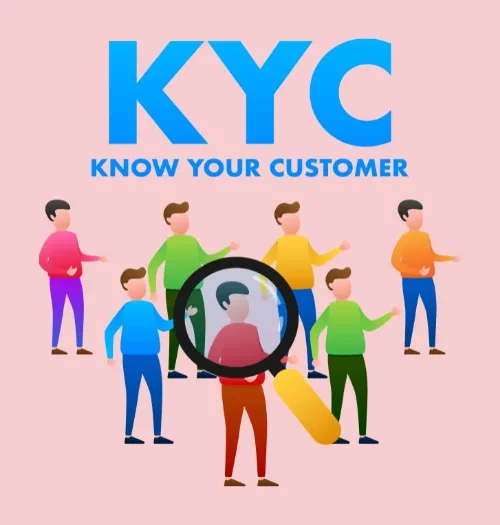Co-Lending: Understand How It Is The Future Of Lending



Overview
The lending world has evolved significantly in the past few years. Recently, we keep hearing buzzwords in the financial industry, such as Buy Now Pay Later, Co-Lending, etc. And to speak, co-lending has created a spark or stir (however way you want to refer) a lot!
As I was preparing to write this article on the webinar, I came across news about co-lending published last week. It says that NBFCs are looking to extend INR 50,000 cr loans with banks with the co-lending model.That sounds amazing, right?
When I hear the word co-lending, many questions arise:
- How can we precisely define co-lending?
- How co-lending business model works? Is it like a marriage between two different backgrounds together to engage in lending?
- Is it an opportunity for banks to reach the unserved and underserved market?
- How is the co-lending reshaping the MSME credit?
- Who is the real gainer: Banks or NBFCs?
That’s what the whole article dives into. The speakers of our recent December 2022 webinar on “Co-Lending by Banks & NBFCs” give you an in-depth view of the product. Read this piece and relate to understanding how co-lending is the future of lending!
Introduction
Karan Desai
He is a Director on the board of Ruloans Distribution Services Pvt. Ltd,one of India’s leading retail loans & credit card distribution companies. With a rich legacy of over two decades, the company distributes over INR 2,300 crores of retail loans across India monthly. He also runs his own investment and advisory platform, Interface Ventures, where he incubates new fintech ventures and works with companies in the financial services domain to raise capital, digitisation and monetisation initiatives.
Jagadeesh Balu
He is the MD and Founder of Athena Capital, a full-fledged investment bank offering equity and debt fundraising services for clients. At Athena, they have helped clients raise over INR 1000 cr in equity and debt within a short span of time. He was also a founding member of Yubi (previously CredAvenue)/Vivriti Capital Group. He conceptualised and built the co-lending platform of CredAvenue from scratch. He tied up over 25 partnerships through the platform. He has over 15 years of experience in Financial Services across Axis Bank, Spark Capital, and Northern Arc.
Mani Parthasarathy (Moderator)
He, the Co-founder and CEO of CloudBankin, is a well-known fintech expert. With more than a decade of experience, he stays on trend with the latest fintech happenings, and his LinkedIn #manispeaksmoney is a treat to all fintech enthusiasts. CloudBankin provides digital lending solutions such as loan origination system and loan management system to all financial institutions, such as NBFCs, Fintechs and Banks across nine geographies. It also provides co-Lending solutions to lenders. Mani has expertise in the IT sector with 15+ years of experience.
Panel Discussion
1. Mani – Let’s start with the fundamental question. What is Co-Lending?
Karan – It is a form of collaboration under which larger banks and smaller NBFCs come together to leverage each other’s balance sheets & distribution strengths. That’s how the union works. Under this model, they will jointly become lenders to the same customer under a single composite loan agreement. Per the current RBI guidelines, the banks-NBFC co-lending contribution ratio is 80:20 of the loan value. But under NBFC-NBFC, there is much more flexibility on the contribution ratio.
2. Mani – What are all the different types of stakeholders?
Karan – The most common stakeholders seen in co-lending are:
- primary lenders – banks,
- smaller partners – NBFCs, and
- borrowers (the most critical stakeholder).
Looking at the success rate of how seamlessly banks can co-lend with NBFCs in the present, similarly, NBFCs with other NBFCs have also started doing the same so that NBFCs can leverage a large pool of borrowers to grow their businesses.
3. Mani – Since mentioning the stakeholders, how are they getting benefitted?
Karan – For Banks, RBI introduced the concept of well-capitalising banks with the opportunity to partner with NBFCs with a strong sourcing and distribution network on the ground and to granularise their loan book. In the last few years, the government has forged a concentrated effort to make large banks “retail-ize” their loan books and reduce their average ticket size. Hence, banks can directly onboard small retail customers onto their balance sheets through the co-lending model. It is a big advantage for them.
For smaller NBFCs, the co-lending model becomes a great way of partnering financially with larger banks as they are trying to raise liabilities to grow their business. It helps in lowering their cost of funds and stretching their resources. It makes them a lot capital lighter.
Jagadeesh – Let me give you a different perspective adding to Karan’s point of view. An NBFC requires funding at the end of the day to grow its business. The different funding options are:
- term loans,
- securitisation and
- now co-lending.
Each one has its pros and cons. A bank has its limit to how much they give an entity. Sames goes for securitisation. But, it’s a perfect synergy between banks & NBFCs in co-lending. Hence, it is far easier to get into this model than a term loan.
4. Mani – What is the actual process of co-lending? How to get started with it?
Jagadeesh – It involves 3 stage process:
- In the first stage, the co-lending partners need to come together and assess whether this partnership has a potential interest, distribution capability and product fitment.
- The second stage assesses the criteria of the co-lending partners. It is an entity-level fitment assessment.
- Last but not least, the third stage assesses the commercial negotiation between the partners that involve operating cost, credit cost, and the margin amount the smaller partner is willing to contribute to the loan amount.
Once all the above processes are complete, the partners sign the agreement. Then comes the integration discussion, which typically may take a month or two, after which the disbursement is done, thus kicking off the co-lending partnership between the financial entities.
5. Mani – Can you explain the revenue model for both bank and NBFC in the co-lending arrangement?
Karan – For banks, they charge a base hurdle rate to the NBFC on their loan share that is similar to the ROI on a term loan. The spread path available over this hurdle rate till the end customer lending rate is what the spread earned by the NBFC. Apart from these, other revenue items can be negotiated between the partners, such as processing fees, penal charges for late payments, loan collection expense, follow-up expenses, NPA management, FLDG mechanism etc.
From a revenue standpoint, the core of the relationship is always the spread between the end customer rate and the hurdle rate by the bank. Other elements are generally free-flowing and change on a transaction-to-transaction basis depending on the product, the size of the partner, etc.
6. Mani – What are the eligibility criteria for a bank to onboard an NBFC for co-lending?
Karan – Co-lending essentially has to be done only by an NBFC or a regulated entity. It cannot be by any entity without a lending license since 20% of the exposure has to be in the balance sheet. That is the base criteria.
Every bank is looking for a different partner for a different product in a different region. So, the larger the institution is, the larger the qualifying criteria. End of the day, the bank expects a completely risk-protected, guaranteed kind of return from its partner in this co-lending model.
Jagadeesh – Adding to Karan’s last statement, a bank will obviously find comfort in partnering with a larger NBFC because of the large loan amount and low-risk perspective.
7. Mani – Who can do co-lending with whom? How does the matching happen?
Karan – The co-lending concept was initially introduced to allow banks to access the more retail and local distribution networks of NBFCs. Even today, a large component of this market comprises the typical 80:20 deals between banks and NBFCs. But the types of NBFCs we see in the present are the ones that seek out large capital NBFCs to help them initially increase their distribution network, build their book for them and keep a track record for the partnership. These can then be used to validate the portfolio of the smaller NBFCs to partner with banks for smaller co-lending lines.
Nothing is cast in stone that there is a minimum eligibility for co-lending. Every institution books it differently. The larger the institution, the higher the gating criteria. The common factors we notice most are the profile of the promoters, the track record and vintage, deep diligence of product portfolio, the ability to collect money from customers and lastly, the rating for entities in the higher value chain.
8. Mani – Who owns customers’ data? Banks or NBFCs?
Jagadeesh – In the co-lending agreement, both the bank and the NBFC own the data since they put their capital in the loan; they assessed the case to lend to the customer. Both of them have the right to own the data.
9. Mani – When loan disbursement happens in co-lending, and the end customer or the borrower repays the money, how does the money move to both stakeholders?
Jagadeesh – When the borrower repays, the ideal scenario should be that it hits an ESCROW account first, which is managed by both stakeholders. And through that account, money gets distributed to the bank and the NBFC. But a different model has come up today in the market in which the money is collected by the NBFC and returned to the bank as a security. Hence, we see both models being implemented in co-lending at present.
10. Mani – What happens in case the borrower defaults?
Karan – This is not a question of what but when it happens. In case of default, the most common way is
- the bank will tell the NBFC to 100% take the loan onto their balance sheet, or
- the NBFC should inform the overdue instalments to the bank. The bank will sweep out the overdue amount from their FLDG to compensate for the default percentage in the loan portfolio. Hence, the NBFC has to be very prudent in the collection.
Jagadeesh – To add to Karan’s point, that is the precise reason while getting into the commercial arrangement, NBFC has to factor in all the losses.
11. Mani – Since two parties are involved in co-lending, who will submit the data to the credit bureaus?
Jagadeesh – The banks were OK with NBFC reporting the data to the credit bureaus on their behalf. But later, it changed that each entity would report its own shares. There isn’t any clear guideline for it. It is case-to-case.
12. Mani – What’s the role of technology in co-lending?
Jagadeesh – Technology plays an intermediary and ensures that the co-lending partnership between banks & NBFCs becomes smooth. They establish themselves as the foundation for seamless interaction between the lenders for the co-lending process. That’s how they are so critical for this model.
In the next few years, co-lending technology will have a much bigger play because it seems that the securitisation market is getting shut down, which means co-lending will be the way forward.
Mani – We have been so far discussing on advantages of co-lending. But what can be the challenges seen in this product?
Karan – For NBFCs, the biggest challenge is that since NBFCs put 20% capital on the loan amount, if the portfolio goes bad beyond anticipated levels, it can lead to profound losses.
For Banks,
- If the co-lending relationship doesn’t scale up to the expected level, the operational situation becomes very complicated and cumbersome to manage. All the time and effort they put into creating this model will go to waste.
- The financial risk is that if the NBFC’s portfolio becomes terrible, the bank is suddenly stuck with it, and it becomes impossible to recover money from its partner. The situation for the bank to cover the money becomes complicated.
Conclusion On The Future Of Co-Lending
Jagadeesh – This is the product of the future. When a financial product comes into the market, it needs technology, the regulator’s blessing, and market adoption. A combination of those things propels a product to go big. And co-lending right now is just in that orbit.
Karan – The significant trust in building any co-lending relationship has to be systematic and platform-driven, where players and intermediaries like CloudBankin will play a massive role in this ecosystem.
We hope the webinar on this hot topic provided you with a wealth of information and insight into the digital lending industry, especially on co-lending. Our webinar video has been uploaded; please check it out for more details. We hold monthly webinars and hope you will join us in the future for more in-depth discussions. Please send us suggestions, and remember to check for future blogs!
Disclaimer: The views and opinions expressed herein are those of the webinar speakers and do not reflect the views of CloudBankin. Any content provided is of the speaker’s opinion and is not intended to malign any organisation, company, individual or anyone or anything.
Frequently Asked Questions by Audiences
What is the difference between FLDG and the co-lending model?
Let’s take an example. In a partnership like a fintech/NBFC (partner 1) with another NBFC/Bank (partner 2), partner 1 places a deposit to partner 2. The deposit that is placed with partner 2 acts as a security or default guarantee. If defaults occur, the overdue amount is deducted from the deposit or the loan is totally taken over by partner 1. This is the concept of the First Loss Default Guarantee (FLDG) model. It is basically an underlying mechanism to protect a financial institution from an NPA. Now, let’s take co-lending. Here, two financial entities come together in a partnership where 80% (for instance) of the loan amount will be given by partner 1, and the remaining 20% will be given by partner 2 (for instance) to the same borrower. This is the concept of the co-lending model. Co-lending and FLDG are both independent concepts. But they support each other and run parallel to each other because overdue is also taken out in co-lending when the smaller partner (NBFCs) will have to compensate the overdue amount to the primary lender (Banks) in case borrowers default.
Who defines the credit norms in a co-lending model?
It is a mutual discussion between banks and NBFCs. But, the banks would want to have their own sake in defining the credit norms and give freedom to the NBFCs on the granular level.
In gold loan co-lending, who is responsible for handling the physical gold?
There is no official guideline for it yet. But banks are often asked by regulators why the physical gold is not with them. Hence, banks always insist that it should be transferred to their vaults.
According to the recent RBI guidelines, FLDG has been stopped. But as a concept, is it wholly banned or is it still in use?
Unregulated entities or non-regulated entities are forbidden from any kind of credit risk. But for regulated entities, specifically NBFCs, underwriting is the business. So, from that standpoint, there is no problem giving FLDG by the REs.
What challenges are seen in terms of integration and reconciliation in a bank-NBFC co-lending relationship?
1. Mismatch of data happens when two parties are involved in co-lending. So, in this data overlapping, both banks & NBFCs should ensure that data matches in both systems. 2. Issues can also occur in reporting. So, banks and NBFCs should ensure that loan and financial reconciliation are handled with care. 3. Other challenges, such as accounting, NPA differences, etc., can also be seen.
What is the role of GST in co-lending?
In a co-lending relationship, an NBFC's spread on the bank's 80% share is treated as an interest in NBFC's P&L book. Therefore, there is no GST impact on it. It is the proper financial and operational income of the NBFC.
In a co-lending partnership, should we have the logos of both lenders in the loan document?
Yes, the logos of both lenders are branded in the loan document so that the borrower will know that he or she is borrowing from both financiers.
Are cooperative banks allowed to do co-lending?
No, as of now, they are not permitted to co-lending at all.
Related Post

CKYC: The Game-Changer for Modern Finance
IntroductionThe importance of CKYC (Central Know Your Customer) in financial

Loan Origination – A Critical Step In Mastering The Loan Process
IntroductionPlanning to take a loan for yourself? The capital required

Loan Origination Post COVID-19 for MFIs
Microfinance or Microcredit is a significant part of the retail
- Email: salesteam@cloudbankin.com
- Sales Enquiries: +91 9080996606
- HR Enquiries: +91 9080996576